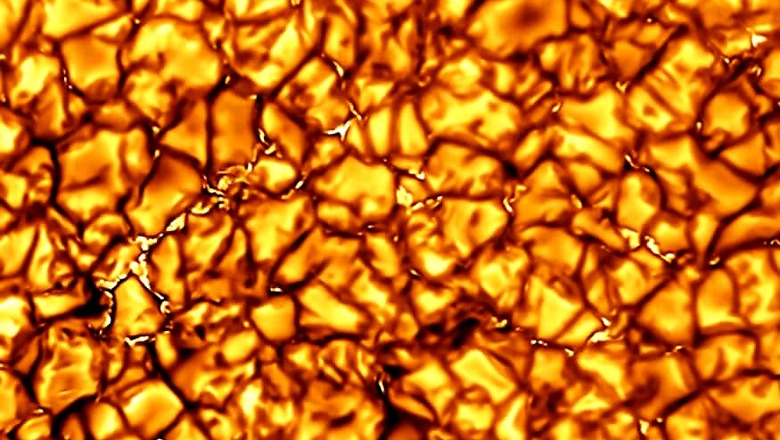
views
For the first time ever, mankind has managed to get a very close view of the Sun's surface, thanks to a team of scientists at the University of Hawai'i and the National Science Foundation. The observation shows cell-like structures on the Sun's surface, that is constantly bubbling and moving around owing to violent, turbulent activity on the star. It also shows the Sun's magnetic footprint, and makes the first truly close observation of the Sun's corona, from where solar storms originate and make massive impacts on the entire solar system, including life on Earth.
Professor Jeff Kuhn of the Institute for Astronomy at University of Hawai'i, who was one of the leading members of the team, stated upon releasing the captured footage, "It is literally the greatest leap in humanity’s ability to study the Sun from the ground since Galileo’s time. It’s a big deal." Upon noting the scale of the achievement made by the on-ground space telescope DKIST, Kuhn further said, "These instruments use sensitive infrared technology and complex optics that reveal sunspots and small magnetic features, and how their magnetism reaches into space. With these new tools we expect to learn how the Sun interacts with the Earth."
According to the University of Hawai'i's report, the telescope is not yet at its peak capacity. Once upgraded with specialised, complex infrared instruments called Cryogenic Near-Infrared Spectropolarimeter (CryoNIRSP) and Diffraction-Limited Near-IR Spectropolarimeter (DL-NIRSP), the Daniel K. Inouye Solar Telescope (DKIST) will be even more capable of making micro observations of the Sun, which the researchers claim will help scientists predict solar storms and related magnetic activity on the Sun's surface. This, in turn, can help prevent major catastrophes caused by the Sun's activity, which include disruption of air travel, power blackouts and even complete disabling of navigation technologies.
The latest achievement comes as NASA and ESA gear up to launch the Solar Orbiter mission, which will become the first ever to fly by the stellar body and photograph its north and south poles. These missions will join space research folklore, along with missions such as Voyager-1 and New Horizons, which have passed on to interstellar space and bring unprecedented observations for mankind. Be sure to watch the captured footage of the Sun's surface, in this video below:




















Comments
0 comment